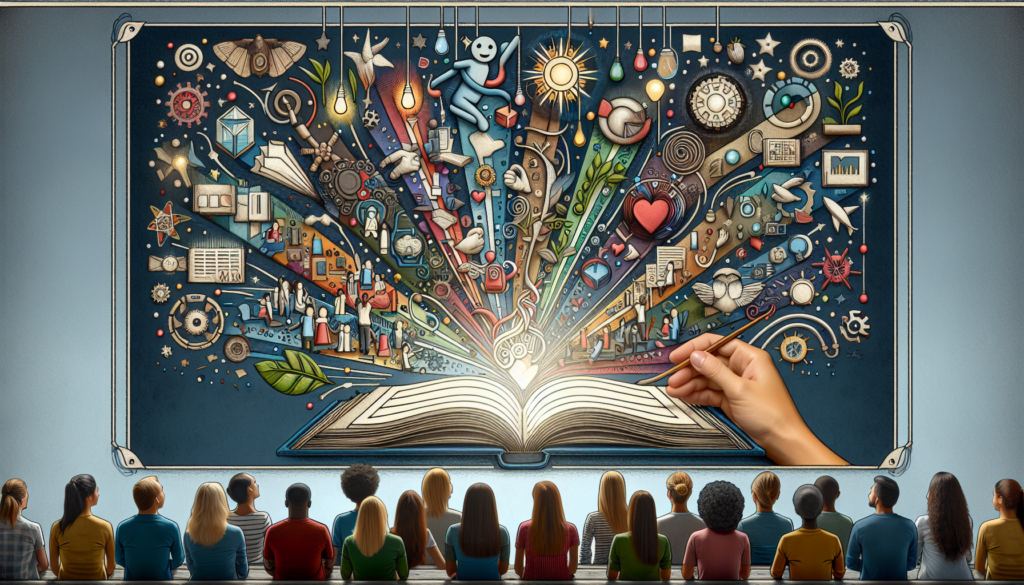In today’s digital age, where content saturation and competition for attention are fierce, storytelling has become an essential tool for creating deep emotional connections with audiences. The art of telling stories is not just a marketing technique, but a multidisciplinary approach that borrows elements from psychology, narrative arts, and social sciences to craft powerful and memorable messages. This communication methodology provides a way to disseminate messages in a manner that is both engaging and resonant, involving the visitor in an experience that goes beyond simple information transmission.
Theoretical Framework: Immersion in Storytelling
Storytelling is not a homogeneous concept, but rather encompasses a range of techniques and strategies designed to emotionally engage the audience. At its core, it is based on structured narrative patterns that have been identified as effective throughout human communication history. These patterns include the presence of a protagonist with whom the audience can identify, a conflict or challenge that generates tension, and a resolution that provides a satisfactory conclusion or a call to action.
Underlying Psychological Theories
Stories evoke emotions and are more easily remembered than raw data thanks to how our brain processes narrative information. The dual-process theory proposed by Daniel Kahneman suggests that we have two systems of thinking: one fast, intuitive, and emotional, and the other slow, deliberative, and logical. Storytelling appeals primarily to the fast system, allowing for a more fluid and less resistant level of message absorption.
Narrative Sciences and Elements of a Compelling Story
An effective story will feature certain elements: a narrative arc, the presence of obstacles, character development, and a climax. In addition, these stories are adorned with sensory and emotional details that allow the reader or viewer to be transported to another world, fostering identification and empathy with the characters.
Practical Application in Digital Communication
In the digital realm, storytelling is manifested through different formats: written content on blogs, videos, podcasts, infographics, and social media, among others. The choice of channel will depend on the message to be communicated and where the target audience is located.
Blogs and Written Stories
Blogs offer an idyllic space for detailed storytelling, allowing for the development of stories with a clear beginning, middle, and end. Here, the choice of descriptive language and the use of literary techniques can increase immersion and emotional connection.
Video and Multimedia
Video combines visual and auditory elements to build a dynamic and immersive narrative. Platforms like YouTube or Vimeo provide a space for brands to present stories that show their values, corporate culture, or the impact of their products on people’s lives.
Podcasts: The Power of Voice
Podcasts harness the power of voice and sound to tell stories. The absence of visual elements demands that the content be particularly strong and evocative at the narrative level to maintain the listener’s attention.
Recent Case Studies
Companies like Apple, Nike, and Coca-Cola have used storytelling to convey their brand messages, employing stories that reflect universal values such as personal improvement, inclusion, and happiness. These human-centered narratives generate emotional resonance, and studies have shown that this resonance can lead to greater brand loyalty and purchase decisions based on positive emotions associated with the told story.
Comparison and Evolution of Digital Storytelling
Compared with previous decades, today’s digital storytelling applies classic narrative principles to new platforms and technologies. The evolution into more interactive stories and immersive experiences in augmented or virtual reality are examples of how narrative is leveraging technological possibilities to tell stories in increasingly engaging ways.
Future Projection: Innovation in Storytelling
Looking ahead, innovation in storytelling will surely continue at the pace of technological advancements. Artificial intelligence and machine learning are emerging as potential tools for personalizing narratives and creating dynamic stories that adapt to users’ reactions in real-time, enabling a degree of interaction heretofore unexplored.
In conclusion, storytelling is not merely a technique but an integral approach that leverages the strengths of different disciplines to connect emotionally with audiences. Brands and creators looking to stand out in a saturated environment will find storytelling a valuable ally for forging lasting relationships with their visitors and turning their messages into memorable narrative experiences.

